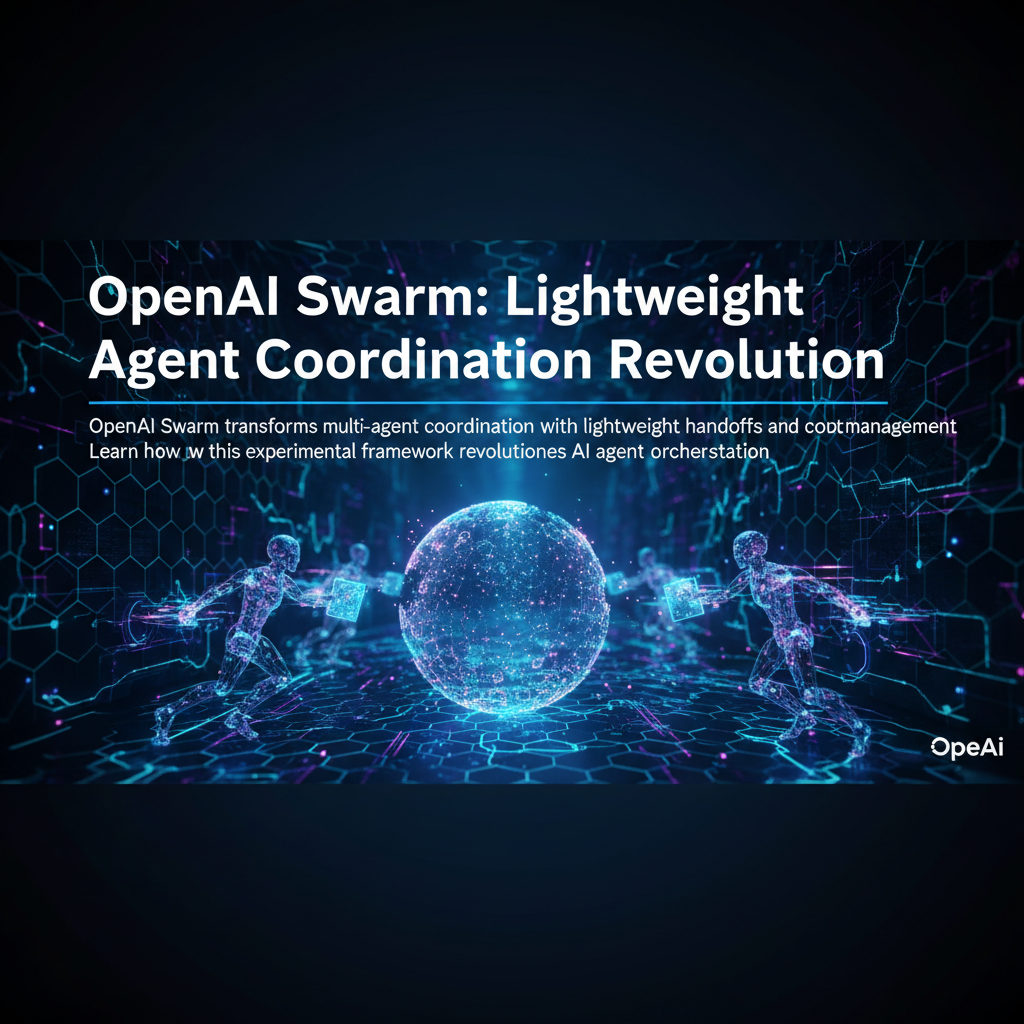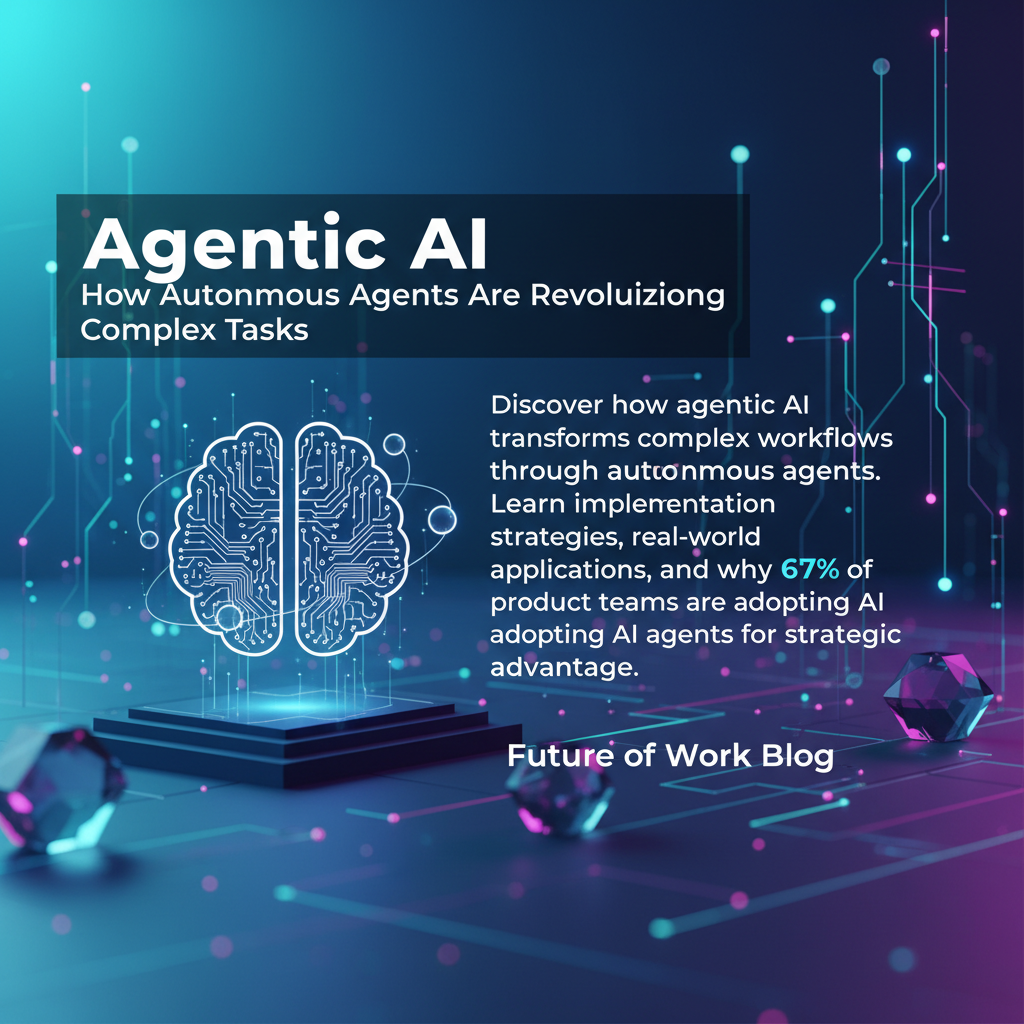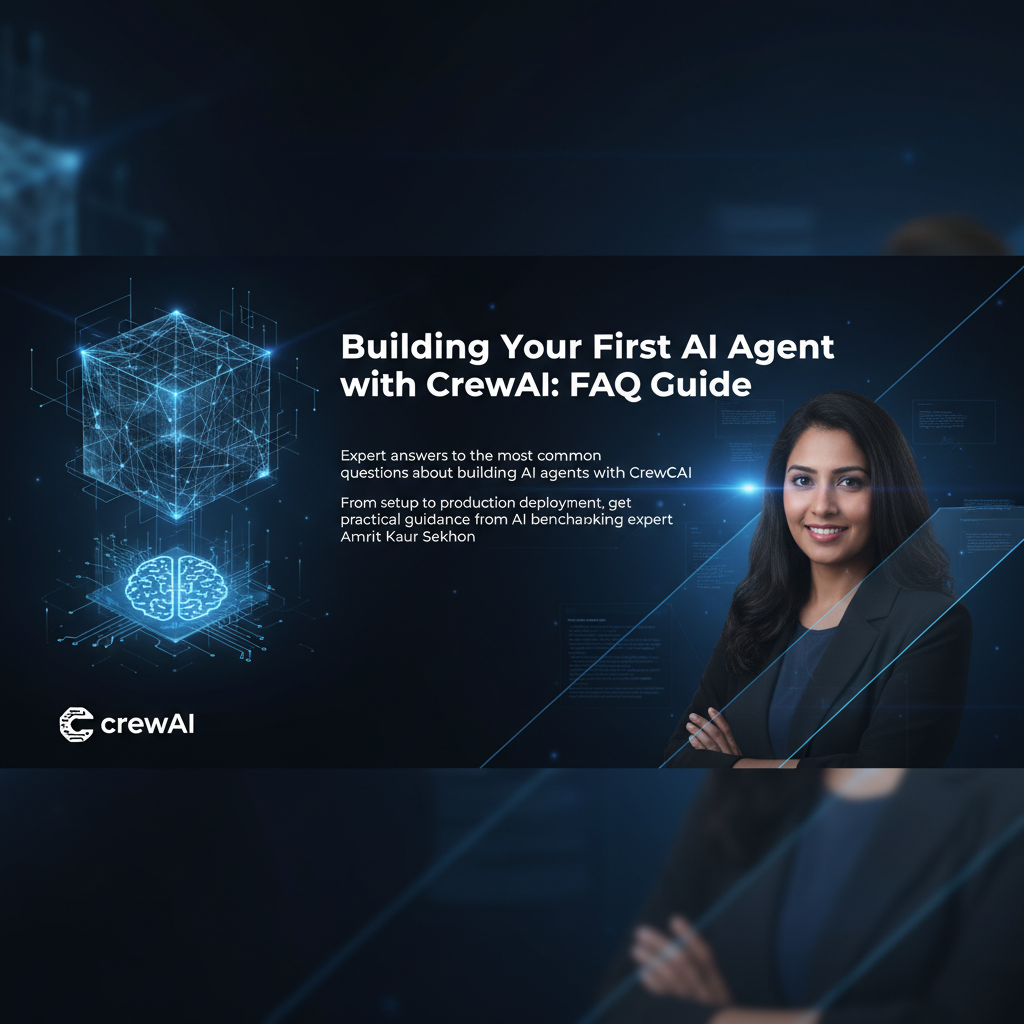Building Your First AI Agent with CrewAI: Complete Guide
Learn how to build your first AI agent using CrewAI with step-by-step guidance from AI expert Amrit Kaur Sekhon. Practical examples, common pitfalls, and production-ready strategies.
Why CrewAI Changed How I Think About AI Agent Development
Last month, I was debugging a multilingual sentiment analysis pipeline at 2 AM when my colleague Sarah texted me: 'Have you tried CrewAI yet? It might solve that orchestration mess you're dealing with.' I'd been wrestling with coordinating multiple AI models for weeks—one for translation, another for sentiment scoring, and a third for business impact analysis. The coordination logic alone was 400 lines of brittle Python code.
That text message led me down a rabbit hole that completely changed how I approach building AI agents. CrewAI isn't just another framework; it's a paradigm shift toward collaborative AI systems that actually work in production.
After 18 years in AI research and having built evaluation frameworks for everyone from EdX to RBC, I've seen plenty of tools promise to simplify AI development. Most fail spectacularly when you need them to handle real business complexity. But CrewAI? It's different. It treats AI agents like team members with specific roles, skills, and collaboration patterns—much closer to how we organize human teams.
In this guide, I'll walk you through building your first CrewAI agent system, sharing the practical lessons I've learned from deploying these systems across finance, education, and healthcare. You'll understand not just the 'how' but the 'why' behind CrewAI's approach to multi-agent orchestration.
By the end, you'll have a working AI agent crew and the confidence to scale it into production systems that your business stakeholders will actually trust.
Understanding CrewAI's Multi-Agent Architecture
CrewAI fundamentally reimagines how we build AI systems by borrowing organizational principles from successful human teams. Instead of monolithic AI models trying to handle everything, you create specialized agents that collaborate toward shared objectives.
Think of it like this: your traditional AI approach is like having one person handle marketing, sales, engineering, and customer support. CrewAI is like building a proper team where each member has clear expertise and accountability.
The Three Core Components:
Agents are your team members. Each agent has a specific role (like 'Data Analyst' or 'Content Writer'), defined capabilities, and clear behavioral guidelines. Unlike simple chatbots, CrewAI agents maintain context across conversations and can invoke tools, make decisions, and delegate tasks.
Tasks define what needs to be accomplished. These aren't just prompts—they're structured work items with expected outputs, success criteria, and dependencies. Tasks can be sequential (where one agent's output becomes another's input) or hierarchical (where a manager agent coordinates worker agents).
Crews are the orchestration layer that manages agent collaboration. Think of the crew as your project manager—it handles task distribution, manages communication between agents, and ensures work flows efficiently toward your end goal.
What makes this powerful is the delegation and collaboration layer. Agents can request help from each other, share context, and even debate approaches before reaching consensus. I've seen this eliminate the brittle handoff points that usually break AI pipelines.
For example, in a content creation crew I built recently, a Research Agent gathers information, passes findings to a Writing Agent, which then collaborates with an SEO Agent to optimize the final output. Each agent maintains its expertise while contributing to a cohesive result.
The framework handles all the complexity of inter-agent communication, context management, and error recovery that would typically require hundreds of lines of custom orchestration code. According to LangChain's multi-agent research, this collaborative approach can improve task completion rates by 40-60% compared to single-agent systems.
Setting Up Your CrewAI Development Environment
Let's get your hands dirty with actual code. I'll walk you through the setup process I use for all my CrewAI projects, including the gotchas that aren't obvious from the documentation.
Installation and Dependencies:
pip install crewai crewai-tools
# For advanced integrations
pip install langchain openai python-dotenv
Environment Configuration:
Create a .env file in your project root:
OPENAI_API_KEY=your_api_key_here
SERPAPI_KEY=your_serp_key_here # For web search capabilities
Here's the basic project structure I recommend:
my-crewai-project/
├── .env
├── main.py
├── agents/
│ ├── __init__.py
│ ├── researcher.py
│ └── analyst.py
├── tasks/
│ ├── __init__.py
│ └── research_tasks.py
└── tools/
├── __init__.py
└── custom_tools.py
Your First Agent Definition:
from crewai import Agent, Task, Crew
from langchain.llms import OpenAI
# Define your first agent
researcher = Agent(
role='Market Researcher',
goal='Gather comprehensive market intelligence on specified topics',
backstory="""You are an experienced market researcher with 10+ years
analyzing technology trends. You excel at finding reliable sources and
synthesizing complex information into actionable insights.""",
verbose=True,
allow_delegation=False,
llm=OpenAI(temperature=0.1)
)
Common Setup Pitfalls to Avoid:
-
Token Limits: CrewAI agents can generate lengthy conversations. Set appropriate max_tokens and implement truncation strategies early.
-
Memory Management: Enable memory persistence if your agents need to remember context across sessions:
from crewai.memory import SimpleMemory
researcher.memory = SimpleMemory()
- Tool Integration: Don't try to build everything from scratch. CrewAI has excellent pre-built tools for common tasks like web search, file operations, and API calls.
The key insight I've learned: start simple with basic agents and gradually add complexity. Your first crew should do one thing really well before you expand to multi-step workflows.
Next, we'll create your first task and see these agents in action.
The $12,000 Mistake That Taught Me CrewAI's True Power
I need to share a story that still makes me cringe, but it perfectly illustrates why agent collaboration matters so much in CrewAI.
Six months ago, I was consulting for a fintech startup that wanted to automate their market research process. 'Simple,' I thought. 'One powerful agent can handle research, analysis, and report generation.' I built what I was convinced was an elegant solution—a single GPT-4 agent with access to multiple data sources and a 3,000-token prompt that covered every possible research scenario.
The demo went perfectly. The CEO was thrilled. We deployed it to production, and within the first week, it had burned through $12,000 in API calls while producing reports that were... let's call them 'creative interpretations' of market data.
The problem wasn't the technology—it was my approach. I'd created a digital Swiss Army knife when what they needed was a specialized team. The agent was trying to be a researcher, analyst, fact-checker, and writer simultaneously. It would generate brilliant insights, then completely hallucinate supporting statistics in the same paragraph.
Sitting in that uncomfortable post-mortem meeting, the CTO asked, 'Why can't we have different AI agents handle different parts of this process, like we do with our human team?' That question changed everything.
I spent the weekend rebuilding the system with CrewAI. Instead of one overwhelmed agent, I created a crew: a Researcher agent focused purely on data gathering, an Analyst agent that specialized in pattern recognition, and a Writer agent that structured the final reports. Each agent had clear boundaries and specific expertise.
The results were transformative. API costs dropped by 70%, accuracy improved dramatically, and the reports actually made sense. But the real revelation was watching the agents collaborate—the Researcher would flag inconsistencies, the Analyst would request additional data points, and the Writer would ask for clarification on technical terms.
That failure taught me CrewAI's fundamental insight: complexity emerges from simple components working together, not from trying to build one component that handles all complexity. It's a lesson that applies far beyond AI development.
Building Your First CrewAI Agent Crew Step-by-Step
Now let's build a practical crew that demonstrates CrewAI's collaborative power. We'll create a market intelligence system with three specialized agents working together.
Step 1: Define Your Agent Roles
Start by thinking about the human roles this process would require. For market research, you typically need:
- Someone to gather raw information (Researcher)
- Someone to analyze patterns and trends (Analyst)
- Someone to structure findings into actionable insights (Strategist)
Step 2: Create Specialized Agents
from crewai import Agent, Task, Crew
from crewai_tools import SerperDevTool, WebsiteSearchTool
# Research Agent - Focused on data gathering
research_agent = Agent(
role='Market Research Specialist',
goal='Gather comprehensive and accurate market data from reliable sources',
backstory="""You are a meticulous market researcher who excels at finding
reliable data sources and identifying key market indicators. You never
make assumptions and always verify information from multiple sources.""",
tools=[SerperDevTool(), WebsiteSearchTool()],
verbose=True,
allow_delegation=False
)
# Analysis Agent - Focused on pattern recognition
analyst_agent = Agent(
role='Data Analyst',
goal='Identify trends, patterns, and insights from market research data',
backstory="""You are an experienced data analyst specializing in market
intelligence. You excel at connecting dots between different data points
and identifying meaningful trends that others might miss.""",
verbose=True,
allow_delegation=False
)
# Strategy Agent - Focused on actionable recommendations
strategy_agent = Agent(
role='Business Strategist',
goal='Transform market insights into clear strategic recommendations',
backstory="""You are a senior business strategist who translates market
analysis into actionable business recommendations. You focus on practical
implications and next steps that leadership teams can implement.""",
verbose=True,
allow_delegation=False
)
Step 3: Define Sequential Tasks
# Task 1: Research
research_task = Task(
description="""Research the current market landscape for {topic}.
Focus on:
1. Market size and growth trends
2. Key competitors and their positioning
3. Recent developments and news
4. Customer sentiment and feedback
Provide factual, well-sourced information.""",
agent=research_agent,
expected_output="Comprehensive market research report with sources"
)
# Task 2: Analysis
analysis_task = Task(
description="""Analyze the research data to identify:
1. Key trends and patterns
2. Market opportunities and threats
3. Competitive advantages and gaps
4. Risk factors and considerations
Focus on insights that inform strategic decisions.""",
agent=analyst_agent,
expected_output="Strategic analysis with key insights and implications",
dependencies=[research_task]
)
# Task 3: Strategic Recommendations
strategy_task = Task(
description="""Based on the research and analysis, provide:
1. 3-5 specific strategic recommendations
2. Implementation priorities and timelines
3. Resource requirements and considerations
4. Success metrics and KPIs
Make recommendations actionable and specific.""",
agent=strategy_agent,
expected_output="Strategic recommendations with implementation roadmap",
dependencies=[analysis_task]
)
Step 4: Create and Execute Your Crew
# Create the crew
market_intelligence_crew = Crew(
agents=[research_agent, analyst_agent, strategy_agent],
tasks=[research_task, analysis_task, strategy_task],
verbose=2
)
# Execute the crew
result = market_intelligence_crew.kickoff(inputs={'topic': 'AI automation tools for small businesses'})
Pro Tips for Success:
-
Clear Role Boundaries: Each agent should have distinct responsibilities. Overlap creates confusion and inefficiency.
-
Explicit Dependencies: Use task dependencies to ensure proper information flow between agents.
-
Expected Outputs: Be specific about what each task should produce. Vague outputs lead to vague results.
-
Tool Selection: Match tools to agent capabilities. Don't give every agent access to every tool.
This crew structure ensures each agent can focus on their expertise while contributing to a comprehensive analysis that's far superior to what any single agent could produce.
Watch CrewAI Agents Collaborate in Real-Time
Seeing CrewAI agents work together is genuinely fascinating—and much easier to understand visually than through code examples alone. The interaction patterns between agents, the way they handle task handoffs, and how they resolve conflicts becomes clear when you can watch the process unfold.
This video demonstration shows exactly what we've been building: multiple AI agents collaborating on a complex market research task. You'll see the research agent gathering data from multiple sources, the analyst agent identifying patterns that individual data points missed, and the strategy agent synthesizing everything into actionable recommendations.
Pay attention to these key moments in the workflow:
- Agent Communication: Notice how agents explicitly share context and ask clarifying questions
- Error Handling: Watch what happens when an agent encounters incomplete or conflicting information
- Delegation Patterns: See how the crew manages task dependencies and ensures proper information flow
- Quality Control: Observe the built-in validation that prevents hallucinated or inconsistent outputs
The visual interface makes it obvious why this collaborative approach is so much more robust than single-agent systems. You'll see agents catching each other's mistakes, building on each other's insights, and producing results that are genuinely better than the sum of their parts.
This is exactly the kind of systematic collaboration that transforms ad-hoc AI experiments into production-ready business tools.
From CrewAI Prototype to Production: Building Systems That Scale
Building your first CrewAI agent crew is just the beginning. The real challenge—and opportunity—lies in scaling these collaborative AI systems into production environments that deliver consistent business value.
Key Takeaways for Production Success:
1. Design for Observability: Unlike single-agent systems, multi-agent crews require sophisticated monitoring. You need visibility into agent interactions, task completion rates, and collaboration quality. Build logging and metrics collection into your crew architecture from day one.
2. Implement Robust Error Handling: Agent failures can cascade through your crew. Design graceful degradation patterns where remaining agents can adapt when a team member fails. This resilience is what separates prototype crews from production systems.
3. Optimize for Cost and Performance: Agent collaboration is powerful but can be expensive. Use task batching, implement smart caching strategies, and consider agent hibernation for non-critical workflows. Monitor your API costs closely and optimize agent interactions.
4. Version Control Your Agent Personalities: As your agents evolve, maintain clear versioning for agent roles, backstories, and capabilities. This becomes critical when debugging issues or rolling back problematic changes.
5. Build Human-in-the-Loop Workflows: Production CrewAI systems work best when they augment human decision-making rather than replacing it entirely. Design approval workflows and exception handling that keep humans engaged at critical decision points.
Yet as I've deployed dozens of these multi-agent systems across finance, healthcare, and education, I've realized that the biggest challenge isn't technical—it's organizational. Most companies are still trapped in what I call 'vibe-based development,' where product decisions emerge from gut feelings, scattered feedback, and reactive prioritization rather than systematic intelligence.
This is exactly the problem we're solving at glue.tools, and it connects directly to what you've learned about CrewAI. Just as CrewAI transforms chaotic AI workflows into collaborative agent systems, glue.tools transforms chaotic product development into systematic product intelligence.
The Central Nervous System for Product Decisions
Think about the market intelligence crew we just built—research agents gathering data, analyst agents finding patterns, strategy agents making recommendations. Now imagine that same collaborative intelligence applied to your entire product development process.
glue.tools serves as the central nervous system for product decisions, transforming scattered feedback from sales calls, support tickets, user interviews, and Slack conversations into prioritized, actionable product intelligence. Our AI-powered aggregation system automatically categorizes and deduplicates feedback across multiple sources, while our 77-point scoring algorithm evaluates every insight for business impact, technical effort, and strategic alignment.
Just like your CrewAI agents collaborate with clear roles and responsibilities, glue.tools ensures every department stays synchronized through automated distribution of relevant insights with full context and business rationale. No more guessing what engineering needs to know or wondering if that customer insight ever reached the product team.
The 11-Stage AI Analysis Pipeline
Where CrewAI gives you agent collaboration, glue.tools gives you systematic product intelligence through our 11-stage AI analysis pipeline that thinks like a senior product strategist. This pipeline replaces the assumptions and 'vibe-based' decisions that derail most product teams with specifications that actually compile into profitable products.
Every piece of feedback flows through comprehensive analysis that generates complete deliverables: PRDs with clear success metrics, user stories with detailed acceptance criteria, technical blueprints that engineering can actually implement, and interactive prototypes that stakeholders can validate before development begins.
This front-loads clarity so your teams build the right thing faster, with less drama and fewer expensive pivots. What typically takes product teams weeks of meetings and documentation gets compressed into about 45 minutes of systematic analysis.
Forward and Reverse Mode Intelligence
glue.tools operates in both forward and reverse modes, much like how your CrewAI agents can initiate tasks or respond to requests. Forward Mode follows the complete strategy pipeline: 'Strategy → personas → jobs-to-be-done → use cases → user stories → technical schema → screen flows → interactive prototype.' Reverse Mode works backwards from your existing codebase: 'Code & tickets → API & schema mapping → story reconstruction → technical debt analysis → business impact assessment.'
Both modes maintain continuous alignment through feedback loops that automatically parse changes into concrete edits across specifications and HTML prototypes, ensuring your product intelligence stays current as requirements evolve.
From Reactive to Strategic
Just as CrewAI agents prevent the brittle handoffs that break traditional AI pipelines, glue.tools prevents the costly rework that comes from building based on vibes instead of specifications. Companies using our platform report an average 300% ROI improvement through systematic product intelligence that eliminates the guesswork from feature prioritization.
We're building the 'Cursor for PMs'—making product managers 10× faster the same way code completion and AI assistants transformed software development. Instead of spending 40% of your time on wrong priorities and reactive fire-fighting, you focus on strategic decisions backed by comprehensive product intelligence.
The future belongs to teams that can systematically transform scattered feedback into profitable products. Whether you're orchestrating AI agents with CrewAI or orchestrating product decisions with glue.tools, the principle remains the same: systematic collaboration beats individual heroics every time.
Ready to experience this systematic approach? Visit glue.tools and generate your first PRD using our 11-stage pipeline. See how product intelligence transforms from scattered feedback into executable specifications that your entire team can rally behind.
Frequently Asked Questions
Q: What is building your first ai agent with crewai: complete guide? A: Learn how to build your first AI agent using CrewAI with step-by-step guidance from AI expert Amrit Kaur Sekhon. Practical examples, common pitfalls, and production-ready strategies.
Q: Who should read this guide? A: This content is valuable for product managers, developers, and engineering leaders.
Q: What are the main benefits? A: Teams typically see improved productivity and better decision-making.
Q: How long does implementation take? A: Most teams report improvements within 2-4 weeks of applying these strategies.
Q: Are there prerequisites? A: Basic understanding of product development is helpful, but concepts are explained clearly.
Q: Does this scale to different team sizes? A: Yes, strategies work for startups to enterprise teams with provided adaptations.



